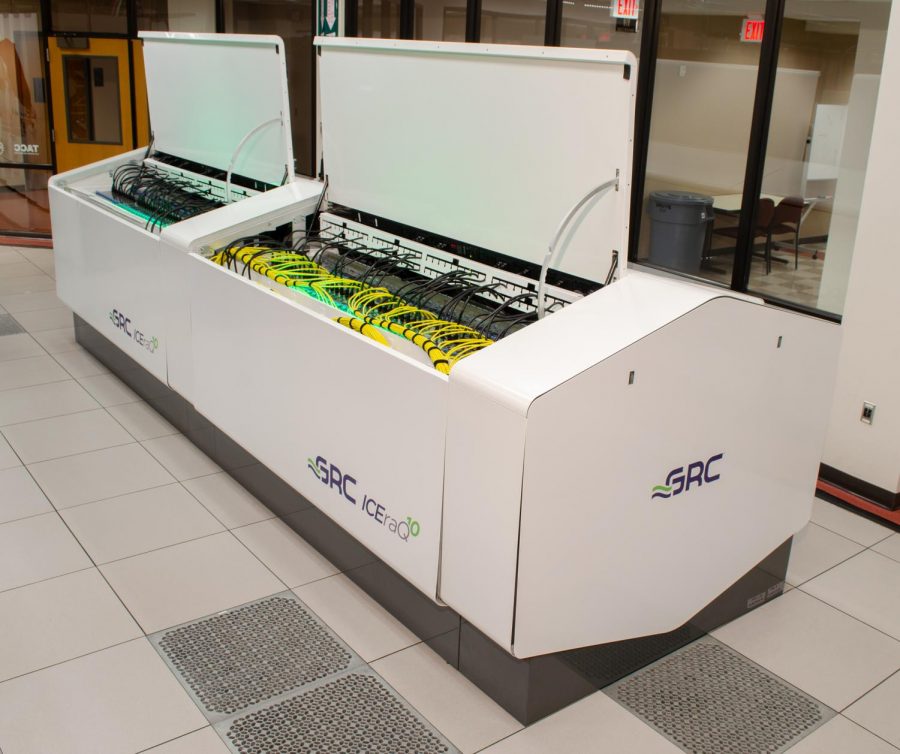UT-Austin and Columbia University researchers have invented a millimeter-wave circulator that could enable tetherless virtual reality and self-driving cars.
Circulators transmit microwave and radio signals from port to port in various devices such as radars.
“Circulators are essential components in radars and in wireless communications, yet, to date, they are realized exclusively with magnets, which make them heavy, costly and bulky,” said Andrea Alu, electrical and computer engineering professor.
Working with Columbia University researchers led by electrical engineering associate professor Harish Krishnaswamy, Alu developed a magnet-free circulator integrated on a chip — like the ones in cell phones — that operates at 25 gigahertz, or 25 billion wave cycles per second. The frequencies used today for cellular service and WiFi are all below 6GHz.
Millimeter-wave frequencies are frequencies higher than 30 GHz, which has more bandwidth available, according to Krishnaswamy. This increased bandwidth is useful for applications that require large data rates, such as tetherless, or wireless, virtual reality and self-driving cars.
According to a press release from UT’s Electrical and Computer Engineering department, this circulator may double the useful bandwidth in wireless communications, allowing devices to simultaneously transmit and receive signals on the same frequency band.
This circulator also uses non-reciprocal wave transmission, which means that the waves travel in a different manner in forward and reverse directions, according to Krishnaswamy.
“A circulator is a non-reciprocal component that separates forward and reverse traveling waves into separate ports, or train tracks, if you will,” Krishnaswamy said. “This allows a transmitter and a receiver to operate simultaneously on the same antenna without interfering with each other.”
Recently, circulators and other non-reciprocal components have been implemented using magnetic materials, called ferrites, Krishnaswamy added. But these ferrites can’t be integrated into a silicon chip, making them bulky and expensive.
Circulators enable two-way communication, distinguishing outgoing and incoming streams of signals to our cells phones, Alu said. This isn’t possible today, he added, because circulators cannot be integrated in a cell phone when they are reliant on magnets and made with magnetic materials.
Last year, Krishnaswamy’s group at Columbia built the first circulator on a silicon chip without using ferrites. This year, in collaboration with UT, they showed the first millimeter-wave circulator on a silicon chip.
“With our technology, cell phones can transmit and receive at the same time on the same frequency spectrum, saving precious spectrum for other users,” Alu said.
This new approach works “from DC to daylight,” meaning that it can work over a wide range of frequencies. This includes radio frequencies below 6GHz to millimeter-wave frequencies above 30GHz, Krishnaswamy said.
This invention would allow for wireless virtual reality headsets and open up bandwidth for wireless communications, in addition to improving the automotive radar signaling used in self-driving cars, Krishnaswamy added.
Circulators currently used in aircraft and ship radar systems are heavy and large, and using these smaller silicon chips would provide significant savings, according to the engineering department press release.
“We look forward to implementing this technology in commercial and military applications … some of which we need to improve how much power our devices can handle,” Alu said. “This is the most pressing metric we are working on at the moment.”


















